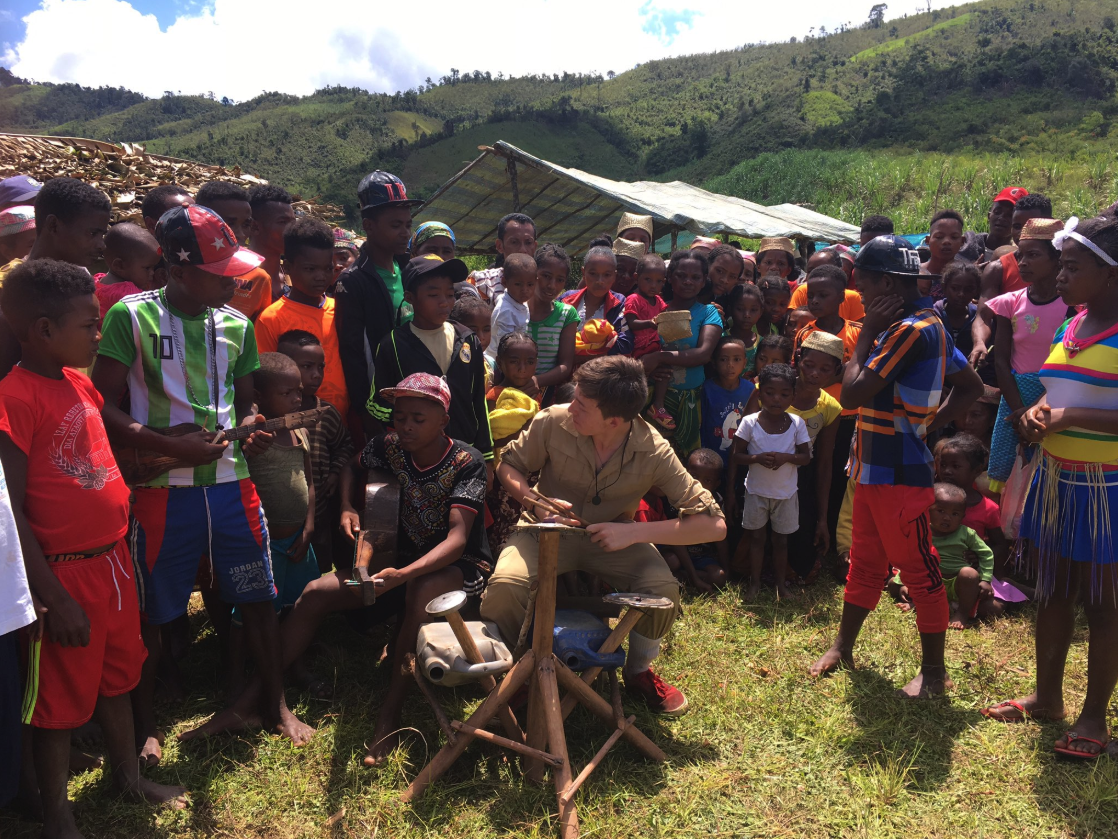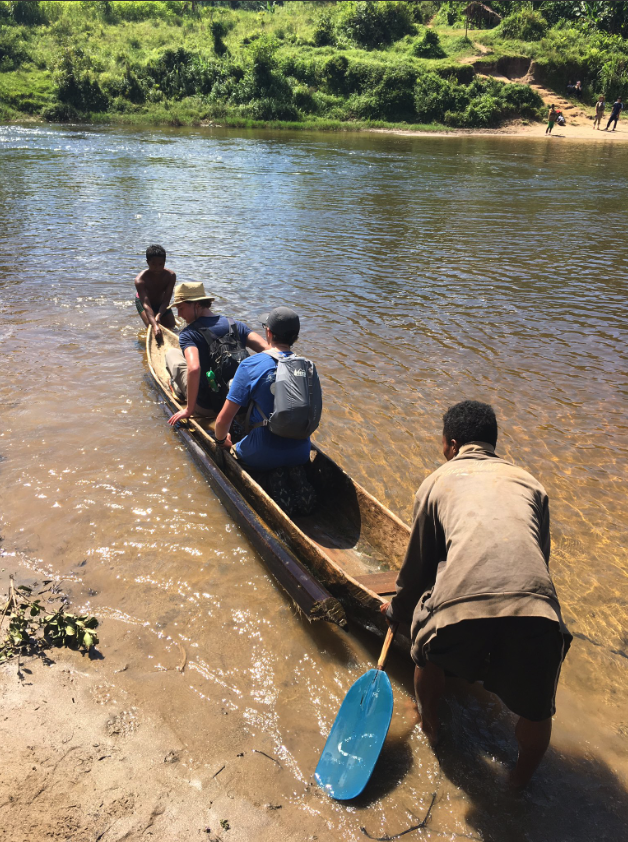Today we awoke as a separated group. The students who hadn’t felt well enough to go on the trek in the rainforest got to sleep in and rest up in the ValBio Research Center, and it was quite the opposite for the students who woke up in the beautiful rainforest. We heard the wake-up call at 5:50 a.m. and knew that we had a long day of hiking ahead of us. We packed up camp and ate a breakfast of French bread. Some of the students and Ms. Hanson got to taste some amazing Malagasy coffee that our guide informed us had just been roasted the day before specifically for us.
We left camp at 7:00 a.m. and were immediately reminded of the previous day’s staggering humidity that made the hike exponentially more difficult. In that three-hour hike, we saw a family of black-and-white ruffed lemurs making their morning transit. We also observed beautiful butterflies, birds, notes, frogs, and a scorpion. Once we left the national park boundaries, the effects of unprotected forests were evident. The clear-cutting was so terrible that there was absolutely no shade on the trail anymore, adding heat to the already thick blanket of humidity. However, this didn’t seem to affect the moods of many of the students as they continued to laugh and enjoy the experience.
When we finally caught sight of our destination (a rural village) from a ridge in the hike, we immediately saw the zebu cow that we had been told earlier in the day had been a gift from our program to the village to thank them for their hospitality towards us. They were going to sacrifice it to honor us. When we arrived to the village, we were immediately treated like royalty. The local villagers taught us how to make spoons and bowls out of cassava leaves. It was extremely entertaining for them to watch our unpracticed hands fumble and break the leaves, even though it is a simple and everyday task of children in the village. By the time a few students had managed to get the leaves to faintly resemble the shape of a spoon, a crowd of laughing villagers had gathered. Next, it was time for the zebu sacrifice. As the students stood and watched the ceremony, the king of the village called to each of the sacred ancestors by name six times, each time adding a blessing and a wish for health and welfare. When it came time for the sacrifice, some students didn’t feel comfortable watching it die, so they excused themselves, while others took the opportunity to experience the village culture even further.
Once it was over, the students that had chose to watch joined those who had chosen not to. As we ate, each of the surrounding villages presented music, dancing, and pomes to us. They all had the overlying theme of “save our forest.” Spanning from small children to highly-practiced acrobats, the performances gave us a taste of local culture and the villagers’ pride in it. Once we finished eating, Aiden B. ‘22 took the homemade drum set and played for the village and Mr. Benson shows off some of his more impressive African dance moves.
As a goodbye gift, we were given traditional hats wooden from bamboo. We thanked the villagers profusely and set off for the lats portion of our trek at Ranomafana. To get from the village to the road, you must go up a hill as steep as the incline without steps, go down 2 kilometers of slippery, uneven trail (which most students thoroughly enjoyed running down), and then cross a river in a dugout canoe. To us, it was the most fun stretch ever, but to the people in the village we had just visited, it was their highway to school and hospitals. That level of isolation does a few different things to remote villages. In terms of preserving culture, isolation, along with pride, is the easiest way for the impact of the western world to be minimized. Though this definitely has many positive aspects, it also brings with it a lack of progress. Children grow up having to walk three kilometers of rough terrain just to get to the road, which takes them to school after that. In this case, it is evident that geographic isolation directly impacts cycles of poverty that Malagasy people find themselves stuck in. But it’s not just education that had intense strains put on it, it is physically dangerous to have no access to a hospital.
When we crossed the river in canoes, we saw a man who had elephantitus, which is a disease involving a river fly to transmit a bacteria that makes your feet grow intensely. Probably owing to the fact that he was poor and it was too inconvenient to seek medical attention, he went untreated. We kept this in mind as we walked the trail.
When we got to the road at last, our bus was waiting for us and we went to get cold sodas and yogurt before heading back to our group at ValBio. We eagerly showered and shared stories of the rainforest with those who were unable to hike. The reunion was full of excitement not only to learn what the others had experienced, but to share all of our favorite parts. After a while, people from ValBio came down and set up a microphone in front of all of us. Dr. Patricia Wright (the founding biologist at ValBio) came to our floor and explained that she was putting on an impromptu concert for us with some of the local musicians in surrounding villages. Three bands performed. The first was the head chef at ValBio singing about conserving the rainforests. The next was an assortment of Malagasy people and instruments also singing about conserving Madagascar’s environment. The final one was a group of high school students in a club that focused on preserving Malagasy culture. They wore bamboo clothes and only used their voices and the bamboo to make music. It was interesting that so much of Madagascar’s art culture is centered around conservation when there is still so much destruction. After the concert, we saw the beginning of ValBio’s bug collection, and then we relaxed as a group and debriefed what a crazy day we’d had.
See more photos from Madagascar ECS here.
Follow all of the student ECS Blogs on Campus News!










